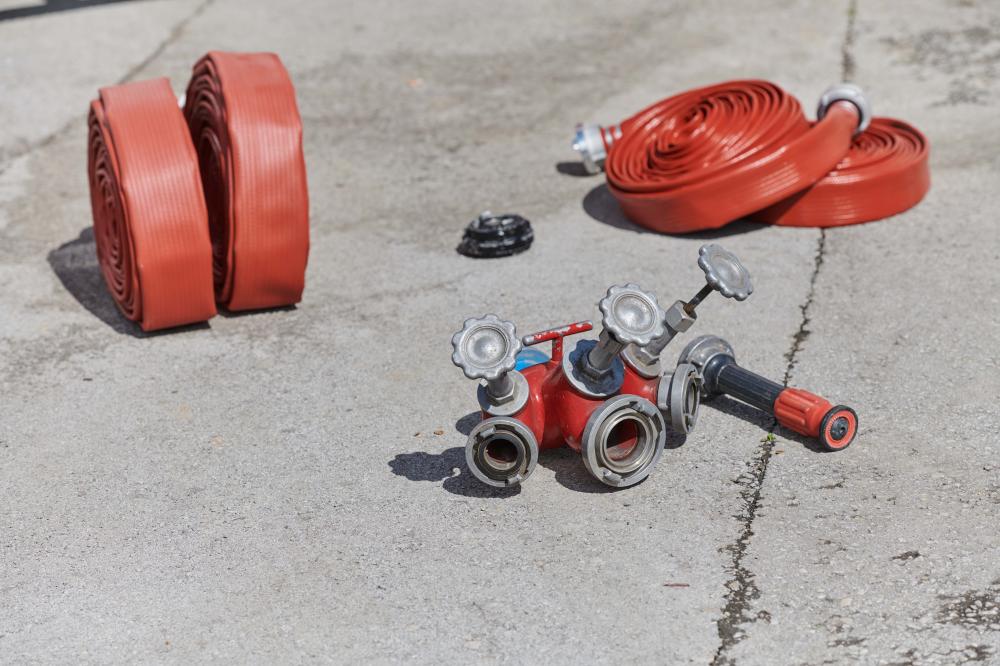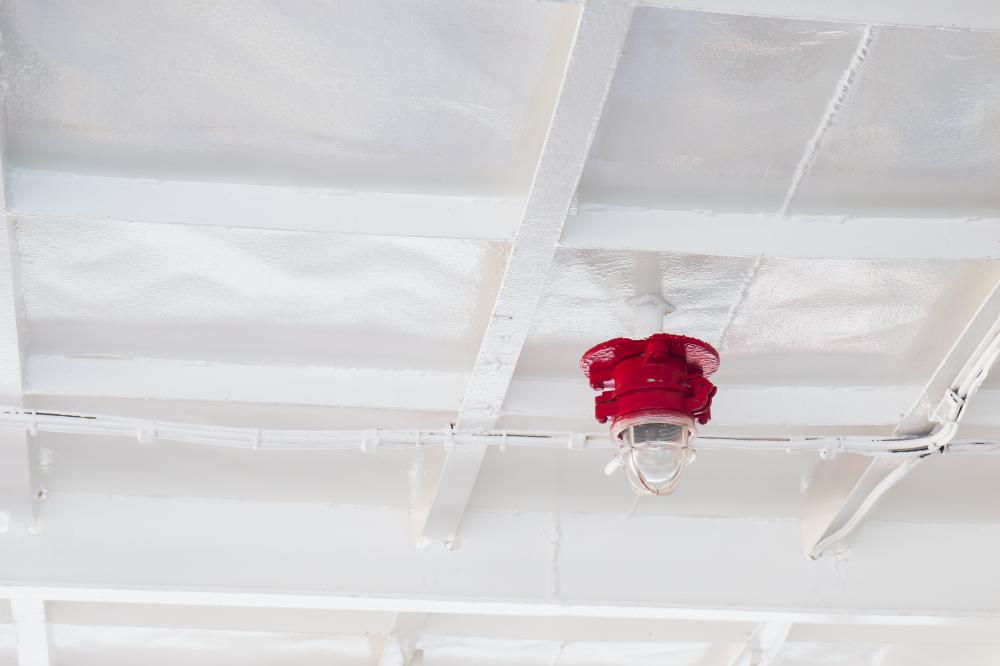The Challenges of Fire Protection in California Innovative Solutions in Fire Prevention Role of Building Materials in Fire Protection The Impact of Forestry Practices on Fire Risk Advancements in Fire Detection and Response Importance of Community Education in Fire Safety Fire Protection Strategies for Urban Areas Lessons Learned from Past Wildfires Fire Protection Technology of the Future

The Challenges of Fire Protection in California
California is a state that has faced significant challenges when it comes to fire protection. With its vast landscapes and diverse ecosystems, the state is frequently subjected to wildfires that threaten both human life and property. The state's Mediterranean climate, characterized by wet winters and dry summers, creates a perfect breeding ground for wildfires. As a result, fire protection is a crucial topic that demands attention.
Extreme weather conditions, such as strong winds and dry spells, exacerbate the wildfire situation. The Santa Ana winds, in particular, are notorious for fanning the flames of small fires into major conflagrations. This puts immense pressure on fire protection services to respond swiftly and efficiently to minimize damage.
Urban development in fire-prone areas has further complicated fire protection efforts. With more communities encroaching on fire-prone lands, the complexity of protecting lives and structures has increased. Innovative solutions and strategies are necessary to address these growing challenges and ensure the safety of California's residents. You'll find more information when you explore Fire Protection Bavaria online.
Innovative Solutions in Fire Prevention
Adopting innovative solutions is essential in tackling the challenges of fire protection California. Cutting-edge technologies and strategies are being developed and implemented to mitigate the impact of wildfires. From satellite imaging to advanced fire detection systems, technology plays a significant role in enhancing fire prevention efforts.
One noteworthy aspect is the utilization of predictive modeling. By analyzing historical data and current conditions, predictive models can forecast potential fire outbreaks. This allows fire protection teams to allocate resources effectively and prioritize areas at higher risk of wildfires.
In addition to technological advancements, community engagement plays a pivotal role in fire prevention. Educating residents about fire safety measures, defensible space practices, and evacuation protocols can significantly reduce the risk of fire-related incidents. Empowering communities to take proactive steps ensures a collective effort in minimizing wildfire threats.
Role of Building Materials in Fire Protection
The choice of building materials is a critical factor in fire protection California. Structures equipped with fire-resistant materials stand a better chance of surviving wildfires. Rockwool insulation, for instance, is renowned for its fire resistance, providing an effective barrier against advancing flames.
Fire-resistant siding, roofing materials, and windows further enhance a building's resilience. These materials not only reduce the likelihood of ignition but also slow down the spread of fire, giving occupants valuable time to evacuate safely. Properly constructed firebreaks and strategic landscaping add another layer of defense.
Emphasizing the importance of fire-rated building materials during construction and renovation projects is essential. By integrating these materials into design plans, architects and builders contribute to a broader fire protection strategy that safeguards communities from the devastating effects of wildfires.
The Impact of Forestry Practices on Fire Risk
Forestry practices greatly influence fire protection California. The management of forests and wildlands directly affects the frequency and intensity of wildfires. Prescribed burns, also known as controlled burns, are a common practice to reduce fuel loads in fire-prone areas. By intentionally setting fires under controlled conditions, excess vegetation is eliminated, thus diminishing the risk of catastrophic wildfires.
Thinning dense forests is another critical practice in fire management. By removing excess trees and underbrush, the likelihood of intense fires spreading quickly is reduced. This creates a healthier forest ecosystem and lowers the chance of devastating wildfire events.
Incorporating sustainable forestry practices is essential for long-term fire risk reduction. Collaborative efforts between government agencies, environmental organizations, and local communities will ensure that these practices are effectively implemented, contributing to a more resilient environment.
Advancements in Fire Detection and Response
Rapid detection and response are vital components of fire protection California. Modern fire detection systems leverage satellite imagery, ground-based sensors, and drones to quickly identify and track wildfires. These technologies enable real-time monitoring, allowing fire management teams to allocate resources promptly and effectively.
Advanced communication systems enhance coordination among fire departments, first responders, and government agencies. By ensuring seamless information flow, these systems strengthen response efforts and improve overall fire management strategies.
Continuous investment in fire detection and response technology is crucial. As wildfires become more frequent and intense, deploying state-of-the-art systems will be key to mitigating the impact on communities and natural landscapes across California.
Importance of Community Education in Fire Safety
Community education is a cornerstone of fire protection California. Empowering residents with knowledge about fire safety measures and evacuation protocols is vital in reducing wildfire-related risks. Fire departments and local organizations regularly conduct workshops, drills, and informational sessions to raise awareness.
One of the primary focuses is teaching homeowners how to create and maintain defensible space around their properties. By clearing vegetation and debris, residents can significantly reduce the risk of fire spreading to their homes. Additionally, understanding proper evacuation procedures ensures that families can leave safely and promptly when necessary.
The role of community volunteers and neighborhood associations shouldn't be underestimated. Collective efforts in promoting fire safety and preparedness foster a sense of resilience and ensure that communities are well-equipped to handle the threat of wildfires.
Fire Protection Strategies for Urban Areas
Urban areas present unique challenges when it comes to fire protection California. Dense populations, high-value properties, and critical infrastructure necessitate specialized strategies. Implementing comprehensive fire protection plans that include the installation of fire suppression systems, such as sprinklers and fire hydrants, is fundamental to safeguarding urban centers.
Urban planners play a vital role in designing cities that prioritize fire safety. From establishing fire lanes to creating buffer zones, effective urban planning minimizes the potential for fire-related disasters. These strategies ensure that emergency responders can access affected areas quickly and efficiently.
Incorporating fire-resistant landscaping is another essential aspect of urban fire protection. Selecting fire-resistant plants and maintaining green spaces reduces the risk of fires spreading to structures, providing an additional safeguard against potential damage.
Lessons Learned from Past Wildfires
Analyzing Historical Events
Past wildfires have provided invaluable lessons for improving fire protection California. Analyzing historical events allows researchers and policymakers to understand the factors contributing to wildfire severity and duration. These analyses inform future strategies and underscore the importance of preparedness.
Improved Emergency Response
One significant lesson is the need for improved emergency response coordination. Streamlining communication and resource allocation during wildfire events enhance the efficiency of firefighting efforts. This ensures that resources are deployed where they are needed most, minimizing damage and protecting lives.
Adaptation and Resilience
Furthermore, communities that have faced recurring wildfires have adopted adaptive strategies and resilience measures. From building fire-resistant structures to developing comprehensive evacuation plans, these communities demonstrate the importance of proactive preparedness and long-term resilience in the face of natural disasters.
Fire Protection Technology of the Future
The future of fire protection California lies in cutting-edge technology. Innovations such as AI-powered fire detection systems and autonomous firefighting drones are paving the way for more efficient and effective responses to wildfires. These technologies shorten response times and provide valuable data for real-time decision-making.
Research and development in materials science are also contributing to fire protection advancements. Fire-resistant coatings and fabrics are being developed to enhance the safety of building materials and protective gear for firefighters.
Investing in these technologies not only improves the current state of fire protection but also prepares California for the evolving challenges posed by climate change. As technology continues to evolve, it holds the key to a safer and more resilient future for communities across the state.

What is the fire protection law in California?
In California, fire protection laws are comprehensive, focusing on reducing wildfire risks and enhancing community safety. They set out requirements for defensible space around properties, which means having a buffer zone between a building and the surrounding grass, trees, and shrubs to slow or stop the spread of wildfire. Recently, laws have also emphasized updating building codes to incorporate fire-resistant materials. From my experience, compliance with these laws significantly enhances safety. For those living near wildlands, understanding these regulations is crucial–not just for legal compliance but for the peace of mind it provides. Have you considered how these laws might impact your community's planning or development strategies?
Do I have to get fire insurance in California?
While fire insurance is not legally mandated in California, it is highly recommended, especially in areas prone to wildfires. Homeowners' insurance policies usually cover fire damage, but it's wise to check the specifics with your provider. I remember a client who thought their basic policy covered all fire-related incidents but found it didn’t cover certain wildfire scenarios. Ensuring you have the right coverage can save you from financial distress in the aftermath of a fire. A good practice would be to review your policy annually and adjust it as necessary to reflect changes in your living situation or increased risks in your area.
What is the new fire law in California?
Recent updates to California's fire laws have introduced stricter building regulations and requirements for creating defensible space. These laws aim to mitigate wildfire risks by ensuring new constructions use fire-resistant materials and adhere to updated safety standards. I see this as a proactive approach where regulations evolve based on lessons learned from past wildfires. Keeping up-to-date with these changes is vital, whether you are planning to renovate or build anew. How do you think these laws might change the way we approach construction or design in high-risk areas?
Can I have a campfire in California right now?
This largely depends on where you are in California and the current fire risk level. During high fire danger periods, many areas impose restrictions on campfires to prevent accidental wildfires. It reminds me of a situation where restrictions were critical in averting potential disasters during a dry season. Before heading out, it’s always a good idea to check with local authorities or state park services. They offer the latest information on fire bans and safe practices. When was the last time you planned a camping trip and checked these regulations?
How do forestry practices impact fire risk?
Forestry practices have a profound influence on fire risk. Techniques like controlled burns and forest thinning help reduce fuel load–essentially the combustible materials like dead vegetation that feed wildfires. These methods maintain healthier forests and reduce the likelihood of severe wildfires. I've seen firsthand how integrating sustainable forestry practices can transform an area prone to wildfires into a balanced ecosystem. This synergy between environmental management and fire protection is critical for long-term resilience. What forestry practices have you observed in your region, and how have they impacted local fire safety?
Resources
- California Governor's Office of Emergency Services – Official website for the California Governor's Office of Emergency Services, providing information on emergency preparedness and response in California.
- National Fire Protection Association – Homepage of the NFPA, a leading organization in fire prevention and safety standards development.
- USDA Forest Service – Official website of the USDA Forest Service, offering information on forestry practices and wildfire management.
- National Interagency Fire Center – Homepage of the NIFC, coordinating wildfire response efforts across federal agencies in the United States.
- US Fire Administration – Official website of the US Fire Administration, providing resources for fire prevention and safety education.






